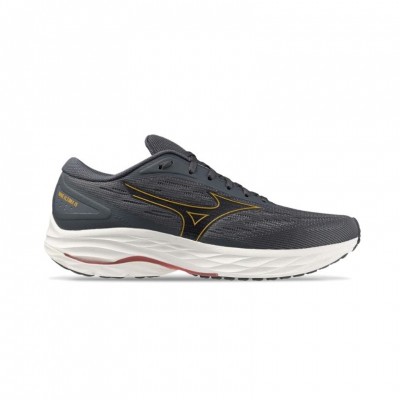In the world of nutrition, intermittent fasting (IF) has been and continues to be one of those trends that has gained momentum in recent years. However, and despite the bombardment of information to which we are subjected, doubts may arise about what this strategy is, about whether it is effective for runners, in what cases it can be or if, on the contrary, it is a risk to our health and our performance. Therefore, we will try to define what intermittent fasting is and all its possible risks and benefits.
Intermittent fasting is a nutritional protocol in which periods of fasting are combined with periods where food intake is allowed, called " feeding windows". These periods can vary in length depending on the protocol used, with the Leangains Protocol (16:8) by Martin Berkhan being one of the most commonly used.
What are the benefits of intermittent fasting on metabolism?
Several studies have observed the efficacy of intermittent fasting in fat loss (so this can be a good strategy when we are stuck in this aspect) (1), in addition to improving the lipid profile, blood glucose levels and cardiovascular risk2). In a very recent study, Levy and colleagues3) observed through a review of the literature that during the first 3 hours of fasting (post-absorption phase) blood glucose levels were maintained, while lipolysis increased, oxidizing a greater number of fats, which can be used as fuel later on.
On the other hand, protein catabolism does not seem to start until 36 hours of fasting, so intermittent fasting does not generate a loss of muscle mass3,4).
Although Harris and collaborators observed through a systematic review and subsequent meta-analysis the efficacy of intermittent fasting at the anthropometric level (weight and fat loss, decrease in waist-hip circumference) and cardio-metabolic level (improvement of blood glucose, insulin sensitivity and blood pressure, among others), in addition to other parameters such as quality of life5), they found no statistically significant differences between intermittent fasting with caloric restriction and a normal diet with caloric restriction, both being equally effective. Similar results were observed by other authors (6).
Does intermittent fasting affect runner's performance?
Intermittent fasting and its influence on performance has been addressed by many studies over the years. However, there seems to be no consensus on its effect. Although it does appear that IF affects endurance sports to a greater extent than strength sports, it should be noted that many of the studies conducted to determine the effects of this nutritional strategy have been conducted in animals, so it would be complicated to extrapolate the results to humans; while many of the studies conducted in humans are applied to athletes in Ramadan, which also restricts fluid intake.
Regarding endurance sports of short duration and with higher intensity (e.g., sprinting), the results also seem to show a decrease in performance, in particular, a decrease in speed and power 3). However, some authors7) pointed out that the human body possibly needs a period of adaptation to intermittent fasting of about 10 days, after which these negative effects are corrected.
How many hours of intermittent fasting? Protocol 16:8 or Leangains

The Leangains protocol provides a feeding window of 8 hours and the remaining 16 hours we remain fasting. The timing is set by the user himself, that is, each person can adjust the 16:8 hours according to his schedule or needs, as long as these parameters are met in a row (i.e., the 8 hours for eating are followed as well as the 16 hours of fasting). Below we can see an example of the 16:8 fasting, although as we have said, another time distribution could be done. It should be taken into account that adherence to this type of protocol can be complicated depending on the person and that fasting during the sleep phase and the morning hours can be easier.
In this protocol it is estimated that on non-training days the diet should be normocaloric, that is, it covers the energy needs of the subject, through a diet low in carbohydrates (CH), and moderate-high in proteins and fats; while on training days a diet low in fats and rich in CH and proteins with a hypercaloric energy balance (higher calorie consumption with respect to needs) is followed.
During thefasting phase no kcals can be consumed, being allowed the consumption of coffee and water. Some supplements such as branched-chain amino acids (BCCA) or whey protein, among others, are also allowed, although this does not mean that they are a must for everyone. On the other hand, during the feeding window we should take all the intakes of the day, being usual a total of3.
With all this, we must take into account the time of training, since, following the planning reflected in the table above, a training during the morning would lead to a training on an empty stomach, while if we train around 15h we could perform an intake prior to it (?20% energy needs); or even if we train around 18-19h we could perform the training after two intakes (?40%). This we must take into account and organize ourselves according to what we consider appropriate at that time.
You might be interested in: The 8 best (seasonal) foods for popular runners according to our nutritionist.
52 Protocol and EAT-STOP-EAT
Not all intermittent fasting protocols require fasting on a daily basis. The Eat-Stop-Eat method consists of fasting on 2 alternate days and eating regularly for the remaining 5 days. However, it must be taken into account that fasting is 24 hours, and therefore, if we finish eating at 8 pm, we will not eat again until the same time the next day. In order to make it a little easier, psychologically speaking, you can have the last meal in the afternoon (17h or 18h), being able to eat the next day from that time and leaving the feeling that "we did not go a whole day without eating". On the other hand, the 5:2 protocol is similar to the previous one, 2 days of fasting and 5 days with a regular diet with the difference that this one allows an intake of 500kcal on fasting days, a fact that can affect in different ways (some people see it as a great help to cope with the 24 hours while others find it more difficult because it generates a greater feeling of hunger in the following hours).
Beware of extremes and flexibility

While the AI may already seem hard in itself, there are still protocols whose complexity when it comes to resisting them goes beyond that. The warrior diet is a great example of this. According to this diet, the person must maintain a 20-hour fast during the day, leaving a 4-hour margin to eat at night. This protocol allows small amounts of some foods to be eaten during the fasting period and gives total freedom in the 4 hours of eating.
Although it may be supported by some of the benefits of intermittent fasting, this diet is much stricter, so it can be difficult to follow for many people and does not justify such variation by evidence (being the same author who indicates that the warrior diet is based on his own beliefs). At the other extreme we find fasting at will, in which the person can fast as many days as he/she considers . This can be interesting for those people who have a hard time with the strictest protocols or simply want to try out what it feels like with the AI.
Conclusions
Intermittent fasting can be a valid strategy depending on the needs and goal of the person implementing it. Although we have seen that it offers positive results in terms of improving body composition and metabolic level (so it can be an effective strategy for weight loss, particularly fat loss), it is not proven to be more effective than regular calorie restriction (without periods of fasting). On the other hand, the fact that there is no unified definition of AI and that there are different types of protocols contributes to the disparity of results offered, although it is true that the current results seem to lean more towards negative effects or no effect on performance than towards an improvement in performance. Another interesting aspect that should be further investigated in the future is the possible adaptation of the organism and its influence on performance after a period of 10 days.
It is very important to take into account factors such as hydration, to respect sleep periods and to be aware of the psychological burden that fasting for a specific period of time may entail.
Having said that, it is important to consider what goal we are trying to achieve before starting an AI pattern, to take into account important factors such as hydration, to respect sleep periods and to be aware of the psychological burden that fasting for a specific period of time may entail, as the psychological effect can weigh heavily on certain people (especially if they have suffered from eating disorders).
If you consider that this practice may be too much even if your goal is to reduce your body weight, perhaps you could choose to start with the more flexible fasting (fasting at will) or simply, if what we intend is to initiate a change and improve our diet, restructure your diet with real food, fresh produce and good processed products that help you to initiate that change towards a healthy lifestyle.
Bibliography
1. Varady KA, Bhutani S, Church EC, Klempel MC. Short-term modified alternate-day fasting: a novel dietary strategy for weight loss and cardioprotection in obese adults. Am J Clin Nutr [Internet]. 2009 [cited 2019 Aug 30];90:1138-43. Available from: http://www.ncbi.nlm.nih.gov/pubmed/19793855
2 Horne BD, Muhlestein JB AJ. Health effects of intermittent fasting: Hormesis of harm? Am J Clin Nutr. 2015;102:464-70.
Levy E, Chu T3 Intermittent fasting and its effects on athletic performance: A review. Curr Sports Med Rep. 2019;18:266-9.
4. Varady KA. Intermittent versus daily calorie restriction: which diet regimen is more effective for weight loss? Obes Rev [Internet]. 2011 [cited 2019 Sep 2];12:e593-601. Available from: http://doi.wiley.com/10.1111/j.1467-789X.2011.00873.x
5 Harris L, Hamilton S, Azevedo LB, Olajide J, De Brún C, Waller G, Whittaker V, Sharp T, Lean M, Hankey C, et al. Intermittent fasting interventions for treatment of overweight and obesity in adults. JBI Database Syst Rev Implement Reports. 2018;16:507-47.
6. Seimon R V, Roekenes JA, Zibellini J, Zhu B, Gibson AA, Hills AP, Wood RE, King NA, Byrne NM, Sainsbury A. Do intermittent diets provide physiological benefits over continuous diets for weight loss? A systematic review of clinical trials. Mol Cell Endocrinol [Internet]. Elsevier Ltd; 2015;418:153-72. Available from: http://dx.doi.org/10.1016/j.mce.2015.09.014
7 Naharudin MN Bin, Yusof A. The effect of 10 days of intermittent fasting on Wingate anaerobic power and prolonged high-intensity time-to-exhaustion cycling performance. Eur J Sport Sci [Internet]. 2018 [cited 2019 Sep 2];18:667-76. Available from: http://www.ncbi.nlm.nih.gov/pubmed/29485326
Read more news about: Nutrition















